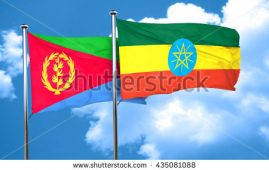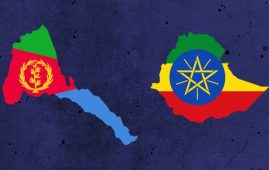United Nations Children’s Fund (UNICEF) UNICEF requested US$57,416,000 for Humanitarian works in Ethiopia of 2011. The finance is needed ‘to respond to the needs of more than 7 million people, including 6 million children’, according to the report, titled ‘2011 ‘UNICEF Humanitarian Action for Children building resilience’ published last Month.
Though the funding requirement US$11 million less than the 2010 request, UNICEF warns that ‘the precarious welfare of women and children in the chronically food-insecure regions of Ethiopia means that full funding is crucial.’ Funding requirements decreased ‘due to the improved harvest season of 2010 and integration of the emergency nutrition strategy (Enhanced Outreach Strategy) in non-food-insecure areas into regular nutrition programming’.
UNICEF intends, working with the Government of Ethiopia, other UN agencies, NGOs and communities, to improve the welfare of women and children. This includes the delivery essential child survival interventions for 6 million children, including 210,000 children with severe acute malnutrition; provision of nutritional and, if necessary, supplementary feeding to 600,000 pregnant and lactating women; and provision of essential prevention and care services through Mobile health teams to 2 million people in Somali region, 90,000 people in Afar region and 302,000 people in the South Omo zone of the SNNP region.
The report includes similar requests for other seven countries of the Eastern and Southern Africa. The report states:
Brundi: US$5,223,000 for ‘addressing the needs of more than 175,000 people, including 15,000 women, 80,000 girls and 80,000 boys.’
Eritrea: US$14,075,000 needed ‘to respond to the needs of about 1.5 million people, primarily children, mired in poverty, plagued by food insecurity and vulnerable to natural hazards’.
Kenya: US$16,168,000 requested ‘to reach 1.9 million people living in emergency conditions in 2011, including around 988,000 girls and 912,000 boys’.
Somalia: US$60,698,000 – ‘to meet the pressing needs of children and women who are among the 2 million people displaced or otherwise affected by conflict’.
Uganga: US$10 million – ‘to meet the humanitarian needs of around 732,000 people, including approximately 183,000 children.’
Madagascar: US$19.2 million – ‘to reach more than 1 million women of childbearing age and around 560,000 girls and 584,000 boys under 5 years old’.
Zimbabwe: US$119,973,000 – ‘to reach around 6,612,000 people, particularly mothers and newborns, orphans and other vulnerable children, child migrants, and those affected by HIV and AIDS’.
Read below the section of the report concerning Ethiopia. [Posted with the permission of UNICEF, as per its copyright requirements]
********************
ETHIOPIA
Emergency conditions are all too familiar to many families in Ethiopia. In 2010, flooding affected nearly 1 million people across several regions.[1] Periodic shocks such as droughts and heavy rains can add immediate crisis to chronic difficulties linked to high poverty levels, dependence on rain-fed agriculture, low availability of safe drinking water, poor hygiene and sanitation, and inadequate disease surveillance. As a result, children and women, especially pregnant women and children with poor nutritional status, are at higher risk of death and disease.
MEETING URGENT NEEDS AND BUILDING RESILIENCE IN 2011
In 2011, UNICEF will work with the Government of Ethiopia, other UN agencies, NGOs and communities to respond to the needs of more than 7 million people, including 6 million children who live in areas vulnerable to natural disasters and political tensions – including the Afar, Amhara, Gambella, Oromiya, Somali, Southern Nations, Nationalities and Peoples (SNNP) and Tigray regions. UNICEF continues to lead the WASH and nutrition clusters, the child protection sub-cluster and co-leads the education cluster. In addition, since February 2004, UNICEF has supported the Government’s emergency nutrition coordination unit.
• Six million children will be healthier because they will receive a series of essential child survival interventions, including nutritional screening and referral (with management of severe acute malnutrition for 210,000 children), vitamin A supplementation and deworming.
• 600,000 pregnant and lactating women will receive nutritional screening, and those who are undernourished will be referred for supplementary feeding.
• Many rural and remote communities lack ready access to essential prevention and care. Mobile health teams will bring such services to 2 million people in Somali region, 90,000 people in Afar region and 302,000 people in the South Omo zone of the SNNP region.
• Whether too much rain or not enough, both put access to safe water for drinking, hygiene and sanitation at risk. UNICEF will help 480,000 people in drought- and flood-affected areas maintain access to safe water.
• UNICEF will ensure that 210,000 children in flood- and conflict-affected areas can attend child-friendly learning spaces, especially in the Afar, Amhara, Gambella, Oromiya, Somali, SNNP and Tigray regions.
• At-risk children are especially vulnerable during times of natural disaster or other upheaval. UNICEF will ensure that child protection structures and mechanisms are in place to prevent and respond to the situation of at least 15,000 out of an estimated 40,000 vulnerable children in the worst-affected regions of Gambella and Somali, including the provision of child focused social welfare services; additionally, survivors of gender-based violence will be able to tap into a network of necessary services through a stronger referral system.
FUNDING REQUIREMENTS FOR 2011
UNICEF is requesting US$57,416,000 for Ethiopia. This is almost US$11 million less than the 2010 request due to the improved harvest season of 2010 and integration of the emergency nutrition strategy (Enhanced Outreach Strategy) in non-food-insecure areas into regular nutrition programming. However, the precarious welfare of women and children in the chronically food-insecure regions of Ethiopia means that full funding is crucial.
More information on achievements of 2010 and the humanitarian action planned for Ethiopia in 2011 can be found at www.unicef.org/hac2011 or the country office
website, www.unicef.org/ethiopia.
Footnote – [1] Ministry of Agriculture and Rural Development, Disaster Risk Management and Food Security Sector, ‘Flood Response Plan’, Federal Democratic Republic of Ethiopia, Addis Ababa, September 2010, p. 4.
************
You may download the report ‘2011 UNICEF Humanitarian Action for Children building resilience’ – HERE.







